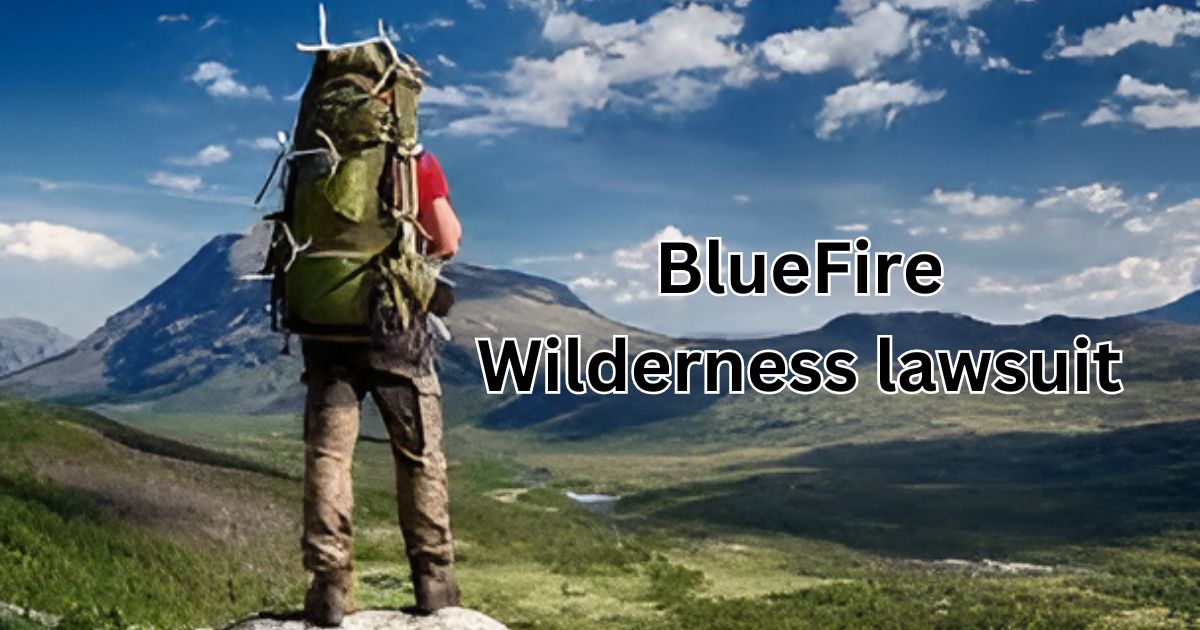BlueFire Wilderness, renowned for its therapeutic wilderness programs, has recently found itself embroiled in legal controversy due to the BlueFire Wilderness lawsuit. The lawsuit, stemming from allegations of misconduct and negligence, has cast a shadow over its otherwise respected reputation in the industry. This article delves into the intricacies of the lawsuit, providing insights into its origins, legal proceedings, and potential implications for both the organization and the broader field of wilderness therapy.
Background of BlueFire Wilderness
Founded with the noble intention of aiding troubled youth through nature-based therapy, BlueFire Wilderness quickly gained recognition for its effective approach. Situated in the serene landscapes of [location], the program integrated outdoor activities with therapeutic interventions, garnering positive feedback from participants and families alike.
Trigger Events Leading to the Lawsuit
The lawsuit against BlueFire Wilderness was precipitated by several critical incidents that raised concerns among stakeholders. Allegations of mishandling of emergency situations, inadequate staff training, and breaches in safety protocols surfaced, prompting legal action from affected families and advocacy groups.
Parties Involved in the Lawsuit
On one side of the legal battle stand the plaintiffs, representing families who allege their children suffered harm or neglect while enrolled in the program. Their claims range from emotional distress to physical injuries, citing instances where the organization purportedly failed to provide adequate care and supervision.
Legal Basis and Allegations
Central to the plaintiffs’ case are claims of negligence and breach of duty of care on the part of BlueFire Wilderness. Accusations include failure to maintain safety standards, insufficient staffing levels during critical incidents, and lack of proper emergency response protocols. These allegations form the backbone of the legal challenge against the organization.
Timeline of Legal Proceedings
Legal proceedings commenced with the filing of complaints, followed by preliminary hearings to determine the validity of claims and potential grounds for litigation. Subsequent court sessions focused on procedural matters, evidence collection, and pre-trial motions, setting the stage for a protracted legal battle.
Public and Media Response
The lawsuit has garnered significant attention from the media and the public, amplifying scrutiny on BlueFire Wilderness’ practices and reputation. Coverage has ranged from investigative reports highlighting alleged lapses in care to interviews with affected families seeking justice for their grievances.
Impact on BlueFire Wilderness Operations
In response to the lawsuit, BlueFire Wilderness has implemented internal reforms aimed at bolstering safety protocols and enhancing staff training. Operational adjustments have been made to address the concerns raised during legal proceedings, signaling a commitment to improving service delivery and restoring trust among stakeholders.
Key Legal Arguments
Legal arguments presented by the plaintiffs revolve around establishing negligence and accountability on the part of BlueFire Wilderness. They cite specific incidents where purported lapses in care resulted in harm to participants, emphasizing the organization’s duty to uphold safety standards and ensure the well-being of enrolled individuals.
Court Decisions and Rulings
Initial court decisions have focused on procedural matters and evidence admissibility, laying the groundwork for forthcoming hearings and potential trial proceedings. Rulings on pre-trial motions have shaped the trajectory of the case, influencing strategies adopted by legal counsel representing both plaintiffs and defendants.
Settlement Attempts and Negotiations
Efforts towards settlement have been underway, with parties engaging in negotiations to explore potential resolutions outside of courtroom litigation. Discussions have centered on compensation for damages, implementation of corrective measures, and agreements aimed at preventing similar incidents in the future.
Expert Opinions and Testimonials
Legal experts specializing in personal injury and negligence cases have offered insights into the complexities of the lawsuit, assessing the strengths and weaknesses of arguments presented by both sides. Testimonials from affected families have underscored the emotional toll and financial burden incurred as a result of their experiences with BlueFire Wilderness.
Future Implications for Wilderness Programs
The outcome of the BlueFire Wilderness lawsuit holds significant implications for the broader field of wilderness therapy. Regulatory scrutiny, industry standards, and public perception are likely to be influenced by the resolution of the case, prompting stakeholders to reevaluate practices and policies governing therapeutic programs.
Community and Stakeholder Reactions
Stakeholders within the wilderness therapy community have expressed varied responses to the lawsuit, ranging from calls for enhanced oversight and accountability to expressions of support for the principles underlying outdoor therapeutic interventions. Community dialogue continues to shape narratives surrounding ethical practices and participant safety.
Also Read: Computer Reservation System News
Legal Precedents and Case Comparisons
Comparisons with similar cases within the industry provide contextual insights into legal precedents and judicial interpretations applicable to claims of negligence and breach of duty. Case studies serve as benchmarks for evaluating the merits of arguments presented in the BlueFire Wilderness lawsuit, informing strategies employed by legal teams.
Ethical Considerations in Wilderness Therapy
Ethical considerations inherent to wilderness therapy practices have come under scrutiny in light of the lawsuit against BlueFire Wilderness. Debates surrounding participant autonomy, informed consent, and duty of care underscore the need for transparent communication and ethical decision-making frameworks within therapeutic settings.
Continued Challenges and Obstacles
Challenges persist in navigating the complexities of litigation, with legal teams confronting procedural hurdles and evidentiary requirements essential to advancing their respective cases. Public relations challenges stemming from media coverage and community perceptions present additional obstacles in managing reputational risk and organizational credibility.
Conclusion
As the BlueFire Wilderness lawsuit progresses, stakeholders remain vigilant in monitoring developments and anticipating potential outcomes that could reshape the landscape of wilderness therapy. The journey towards resolution promises to be arduous yet pivotal, with implications extending beyond legal boundaries to encompass broader implications for participant safety and program accountability.
FAQs
What is the BlueFire Wilderness lawsuit about?
The BlueFire Wilderness lawsuit revolves around allegations of negligence and misconduct within the wilderness therapy program. Plaintiffs, typically families of participants, claim that the organization failed to uphold safety standards and provide adequate care, resulting in harm to their children. The lawsuit seeks accountability and compensation for damages incurred during their enrollment in the program.
Who are the parties involved in the BlueFire Wilderness lawsuit?
The lawsuit involves plaintiffs, representing families and participants affected by alleged misconduct at BlueFire Wilderness. Defendants include BlueFire Wilderness itself, along with key personnel and entities associated with the program. Legal proceedings focus on determining liability and addressing claims of negligence through judicial processes.
What are the potential outcomes of the BlueFire Wilderness lawsuit?
Potential outcomes of the lawsuit include monetary settlements, court rulings determining liability, and changes in operational practices at BlueFire Wilderness. Settlements may involve compensation for damages, implementation of safety reforms, and agreements aimed at preventing future incidents. Judicial rulings could set precedents impacting the wilderness therapy industry’s regulatory framework and ethical standards.









